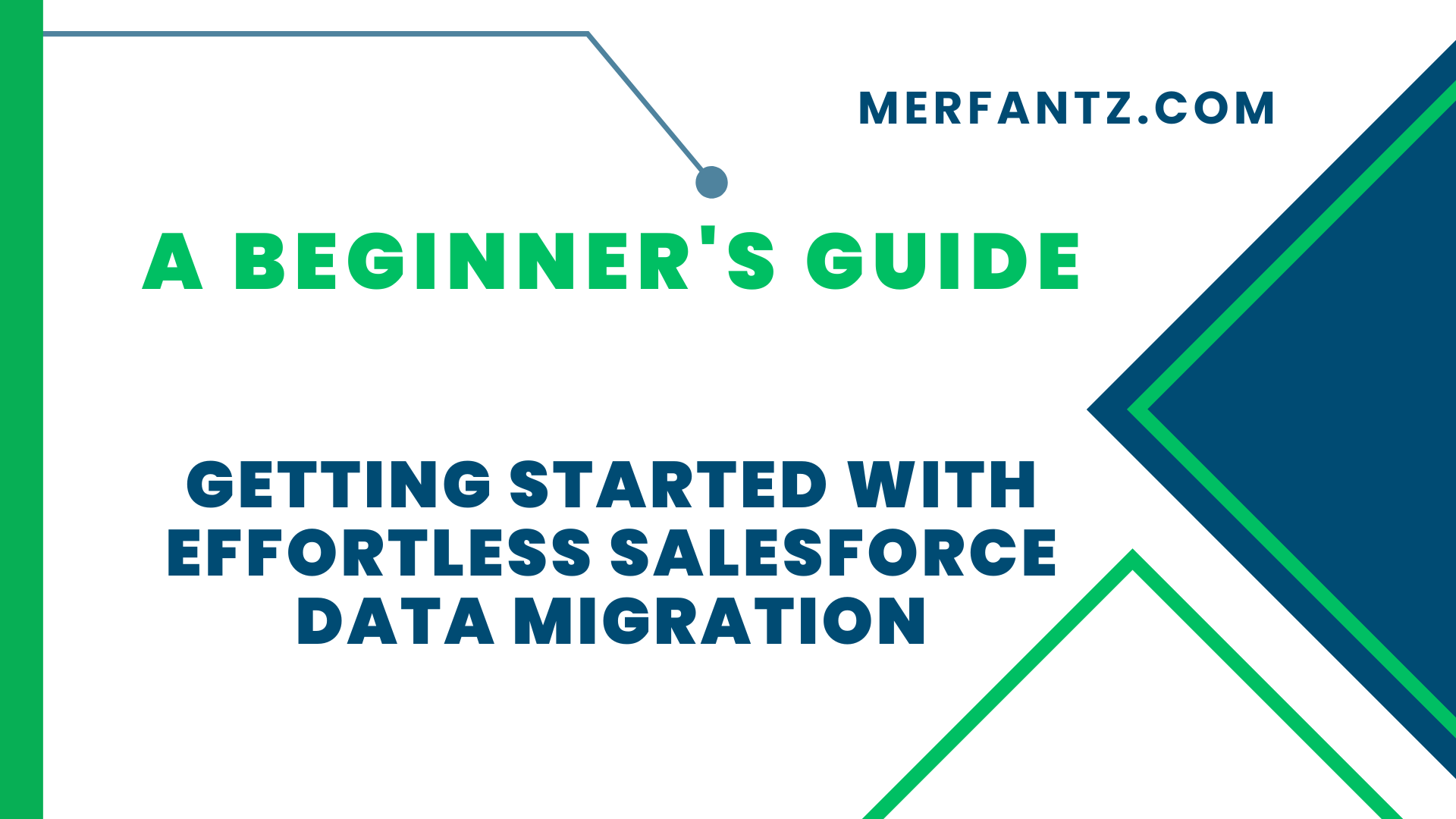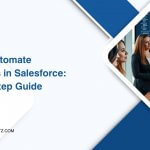Understanding Salesforce Data Migration
Salesforce data migration is a crucial process that involves transferring data from one or multiple sources into Salesforce, a robust Customer Relationship Management (CRM) platform. This migration ensures that your valuable customer information, sales data, and business records seamlessly transition into Salesforce, providing a unified and organized database. The data migration process is fundamental when adopting Salesforce for the first time, consolidating data from legacy systems, or integrating data from various sources into a single Salesforce instance.
During the data migration, data cleansing and formatting play a vital role in ensuring the accuracy and reliability of the migrated data. Data cleansing involves identifying and rectifying any discrepancies, such as duplicate records or incomplete entries, while data formatting ensures that data from different sources conforms to Salesforce’s data structure. A well-executed data migration not only sets the stage for a successful CRM implementation but also enables businesses to harness the full potential of Salesforce, unlocking valuable insights, streamlining processes, and enhancing overall productivity.
Why Data Migration is Critical for Your Salesforce Success
Salesforce is a powerful Customer Relationship Management (CRM) platform that can revolutionize how businesses manage their customer data and operations. However, successfully implementing Salesforce requires a well-executed data migration strategy. Data migration is the process of transferring data from legacy systems or spreadsheets into Salesforce, ensuring seamless continuity and accuracy of information. It is critical for your Salesforce success as it forms the foundation for your entire CRM ecosystem.
During Salesforce data migration, you consolidate and transform data from various sources, such as Excel files, databases, or other CRMs, and map them into Salesforce’s data structure. This ensures that your sales, marketing, and customer support teams can access unified, up-to-date information, enabling them to make informed decisions, deliver personalized experiences, and drive customer satisfaction. By comprehending the significance of data migration, you lay the groundwork for a successful Salesforce implementation and harness the full potential of the CRM system to achieve business growth and customer-centric excellence.
Preparing Your Data for Migration: Cleaning and Formatting
Before embarking on the Salesforce data migration journey, it is imperative to prepare your data meticulously. Data cleansing and formatting play a pivotal role in ensuring the quality and accuracy of the data being migrated. Start by conducting a thorough data audit, identifying duplicate records, incomplete entries, and other inconsistencies. This will help streamline your data, making it more efficient and reliable for the migration process.
Once you’ve identified and rectified the data discrepancies, it’s time to format your data to align with Salesforce’s data model. This involves mapping the fields in your existing data sources to their corresponding fields in Salesforce. Take note of any data transformations or customizations needed to accommodate differences in data structures between systems. By investing time and effort in data preparation, you set the stage for a smoother Salesforce data migration, reducing the likelihood of errors and data integrity issues down the line.
Choosing the Right Data Migration Tools and Resource
Selecting the appropriate data migration tools and resources is a critical decision that can significantly impact the success of your Salesforce implementation. Salesforce offers various built-in migration tools, such as Data Loader and Data Import Wizard, which are suitable for straightforward migrations. However, for more complex migrations involving large datasets and intricate data relationships, you might need specialized third-party migration tools.
Partnering with a Salesforce implementation partner like Merfantz Technologies can also be immensely beneficial. They possess the expertise and experience to handle intricate data migration projects, providing customized solutions tailored to your business requirements. By combining the right tools and expert guidance, you can streamline the migration process, minimize disruptions, and ensure a seamless transition to Salesforce.
Step-by-Step Guide to Salesforce Data Mapping
Data mapping is a crucial phase in the Salesforce data migration process, where you define how data from your source systems will be mapped to their corresponding fields in Salesforce. To begin, create a detailed inventory of all data fields, their formats, and relationships in both your source systems and Salesforce. This will help you identify potential discrepancies and ensure a smooth data mapping process.
Next, establish clear data mapping rules, considering data validation and data transformation requirements. Take into account any custom fields, picklists, or dependencies specific to your organization’s Salesforce instance. As you progress through the data mapping phase, communicate and collaborate with stakeholders to validate the mapping accuracy and make necessary adjustments. A well-executed data mapping strategy lays the foundation for a successful data migration and sets the stage for efficient data utilization within Salesforce.
Executing a Test Migration: Identifying and Resolving Issues
Before executing the full-scale data migration, conducting a test migration is essential to identify and address potential issues. A test migration involves migrating a subset of data to a sandbox or development environment in Salesforce. This allows you to verify data integrity, validate data relationships, and assess the migration’s overall success.
During the test migration, meticulously examine the migrated data for any anomalies, such as missing records, data truncation, or incorrect data mappings. Collaborate with your data migration team to troubleshoot and resolve any issues that arise. By thoroughly testing the migration process, you can mitigate risks, ensure data accuracy, and instill confidence in stakeholders before proceeding with the actual migration.
Best Practices for a Smooth Data Migration Process
To ensure a smooth Salesforce data migration process, it is crucial to follow best practices established by industry experts and experienced Salesforce implementation partners. Start by defining clear objectives and goals for the migration, and establish a realistic timeline and budget. Involve all relevant stakeholders and communicate the migration plan to ensure a unified approach.
Maintain a backup of your existing data to avoid permanent data loss during the migration process. Conduct thorough testing and validation at each stage to catch and address issues early on. Provide comprehensive training to end-users, equipping them with the necessary skills to navigate and utilize Salesforce effectively. Following these best practices will help you navigate the data migration journey with confidence and achieve a successful implementation.
Ensuring Data Security and Compliance During Migration
Data security and compliance are paramount during the data migration process. Protect sensitive customer information and confidential business data by implementing robust data encryption and access controls. Comply with industry regulations, such as GDPR or CCPA, to safeguard customer privacy and data rights.
Conduct regular security audits and risk assessments to identify potential vulnerabilities. Work with your IT and security teams to implement measures that ensure data integrity and prevent data breaches during migration. Prioritize data protection throughout the migration process, fostering trust with your customers and stakeholders.
Post-Migration Evaluation: Data Validation and Accuracy Checks
After the data migration is complete, perform thorough data validation and accuracy checks to confirm that all data has been successfully transferred and is functioning as expected in Salesforce. Compare migrated data with the original source data to verify accuracy and identify any potential discrepancies.
Engage end-users and stakeholders to test various Salesforce functionalities and reports to ensure they are working as intended. Address any identified issues promptly and provide additional training or support if required. By conducting post-migration evaluations, you can fine-tune your Salesforce setup, maximize data quality, and optimize user experience.
Optimization Strategies for Enhanced Salesforce Performance
Optimizing Salesforce for enhanced performance is essential to make the most of the platform’s capabilities. Regularly monitor system performance and data usage to identify any bottlenecks or inefficiencies. Implement data archiving strategies to maintain a lean and responsive Salesforce environment.
Stay informed about Salesforce updates and new features, incorporating them into your workflows to drive productivity. Leverage automation and integration tools to streamline processes and reduce manual efforts. Continuously review and improve data quality to ensure accurate reporting and analytics. By optimizing Salesforce performance, you can elevate your business operations and deliver exceptional customer experiences.
FAQ: Frequently Asked Questions
What is Salesforce data migration, and why is it essential for my business?
Salesforce data migration is the process of transferring data from existing systems or sources into Salesforce. It is crucial for your business as it ensures that all your customer data and information are seamlessly migrated to Salesforce, laying the foundation for a successful CRM implementation.
What are some common challenges faced during Salesforce data migration?
Common challenges during Salesforce data migration include data cleansing and formatting, mapping data to Salesforce fields accurately, and ensuring data security and compliance. Proper planning, testing, and expert guidance can help overcome these challenges.
How long does the Salesforce data migration process usually take?
The duration of the Salesforce data migration process varies depending on the complexity and volume of data being migrated. On average, a well-planned migration can take a few weeks to a couple of months.
Do I need a Salesforce implementation partner for data migration?
While it is possible to perform data migration independently, engaging a Salesforce implementation partner like Merfantz Technologies can streamline the process, reduce risks, and ensure a successful migration with expert guidance and support.
How to do data migration in Salesforce?
Data migration in Salesforce involves preparing data, mapping fields, using migration tools (e.g., Data Loader), executing test migrations, and validating data accuracy.
Which ETL tool for Salesforce data migration?
Popular ETL tools for Salesforce data migration include Data Loader, MuleSoft, Talend, and Informatica.
What is the first step in data migration?
The first step in data migration is conducting a thorough data audit and analysis to assess data quality and identify potential issues.
What is the first core strategy before starting the data migration process?
The first core strategy is defining clear objectives and goals for the data migration, along with establishing a realistic timeline and budget.
Conclusion:
In conclusion, Salesforce data migration is a critical step in the CRM implementation journey that requires meticulous planning, preparation, and execution. By understanding the significance of data migration, preparing your data thoroughly, and choosing the right tools and resources, you can ensure a seamless transition to Salesforce. Following best practices, prioritizing data security, and conducting post-migration evaluations will help maintain data integrity and optimize Salesforce performance. At Merfantz Technologies, we are committed to guiding you through the entire Salesforce implementation process, making your data migration effortless, and setting your business up for success in the dynamic world of CRM. Empower your organization with Salesforce today and unlock the true potential of customer-centric excellence.
Author Bio
Co-Founder & CMO at Merfantz Technologies Pvt Ltd | Marketing Manager for FieldAx Field Service Software | Salesforce All-Star Ranger and Community Contributor | Salesforce Content Creation for Knowledge Sharing






